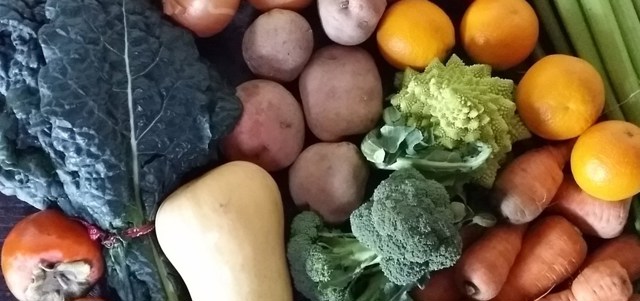Food waste is a problem with many facets. Food obviously uses resources to produce but it is also often shipped huge distances which contributes to the carbon emissions associated with it. Once we have brought it home from the shop and disposed of the packaging, New Zealanders are surprisingly bad at then just chucking it out! Food waste in New Zealand has been estimated at 30% but a recent study showing a link between wealth and relative food waste has many people suggesting that the initial estimate is conservative and we actually waste much more than that.
The reason why wasting food is a problem is that not only are there resources that go into growing and transporting it, but there are resources then required to transport and dispose of it. Often people put food scraps in their landfill bin. That waste is then transported to a landfill site and disposed of with other waste. Once in landfills, food waste and other organic matter break down slowly over time and release methane gas. This is a greenhouse gas that contributes to climate change.
The most wasteful Kiwis households are throwing out up to 4 kilograms of food or more each week, which can be down to losing food at the back of the fridge or throwing away the rest of last night's curry.
Throwing out a little food might seem like no big deal, but global emissions from wasted food are four times as much as those produced by aviation.
It's also expensive - food New Zealand sends to the landfill is variously estimated at being worth somewhere between $800m and $2b every year.
The average New Zealand household throws away about $644 worth of food each year.

Reducing your food waste
Storage
The main contributing factor to food waste is incorrect storage. Here are some tips on how to store food to increase its life and reduce waste.
- Store food where you can see it! Don't push things to the back of your fridge, never to be seen again. Consider having your fresh produce in a veggie rack or similar so that you can look at what you have and plan meals around the things that will go off first and this also allows you to spot if some fruit has gone bad.
- Humans innately don't like white empty space, so we have a tendency to fill our fridges to make ourselves feel better. If you can change the way you think about your fridge, you will end up wasting much less.
- Check out this incredibly comprehensive guide on how to store different foods plastic free!
Freeze
- If you have leftovers you know you wont eat in time, chuck them in the freezer
- Freeze bread to save it from going off in the cupboard. You can toast bread from frozen with little difference than fresh
- Freeze food in portions – ice cube trays, containers without a lip (then store in a bulk container). Free flow by laying on a baking tray and freezing then storing in a container. That way they won't stick together. Perfect for avocado.
- If freezing liquids (i.e. broth or soup) freeze with the lid off then put it on once frozen. This is because the liquid expands when frozen.
Cooking with scraps
- Don’t peel your veggies - if you give them a good scrub, most veggies don't need peeling and often most of the nutrients are in the skin.
- Anything you do peel or cut off, boil in water to make your own veggie stock for soups. Freeze in portions (ice cube trays work well).
- Compost soup – make a generic veggie soup to use up any of the produce that are looking sad and are on their last days.
- Make relishes, jams, chutneys with produce that is past its best. This is great if you have your own fruit trees and it all comes at once!
- Did you know you can eat cauliflower leaves. You can cook them the same way as other leafy greens or roast them for a side dish.
- Carrot tops can be blended up for pesto!
- Stale bread can be used for croutons or breadcrumbs – freeze well too
- Citrus peels can be soaked in white vinegar to make your own all purpose cleaning spray
Resources
Love Food - Hate Waste
Love Food, Hate Waste is a campaign for households and catering businesses, to make better use of the food we buy so that less is wasted. They provide a range of online resourcing including tips on how to store food to make it last longer, recipes to use up food that may otherwise go in the bin, tips on meal planning and information on use by dates. They also run Food Lovers Masterclass with Kate Meads workshops around the country so check their events page for dates near you.
Wasted New Zealand
Wasted New Zealand is an educational video series that takes you on a journey through our key waste streams here in New Zealand. Join Kate Meads and Brad Stent to find out where all our waste ends up, look at Recycling, Waste Water, Food Waste and Landfill.
Food Rescue
There are numerous projects and charities around the country that aim to connect edible food waste to those that need it. Examples include:
- New Zealand wide: Foodbanks, Olio App
- Whakaora Kai in Whangārei
- South Kaipara Good Food in Helensville
- KiwiHarvest and Fairfood in Auckland
- Kaivolution in Hamilton
- Good Neighbour in the Bay of Plenty
-
Gizzy Kai Rescue in Gisborne
- Nourished for Nil in Hawke's Bay
- On the House in New Plymouth
- Whanganui Kai Hub in Whanganui
- Just Zilch in Palmerston North
- Waiwaste in Masterton
- Kaibosh in Wellington
- Satisfy Food Rescue in North Canterbury
- Kairos Free Store in Christchurch.
- KiwiHarvest (previously called Foodshare) in Queenstown, Dunedin and Invercargill.
- Countdown stores have also partnered with the Salvation Army food banks to increase food donations.
